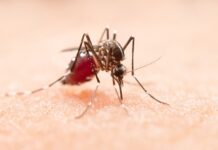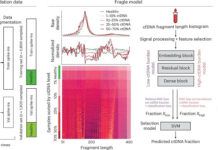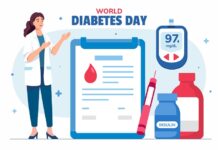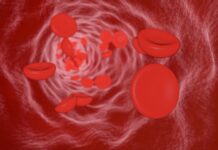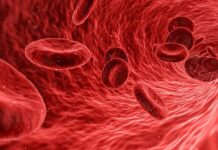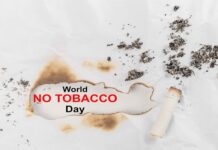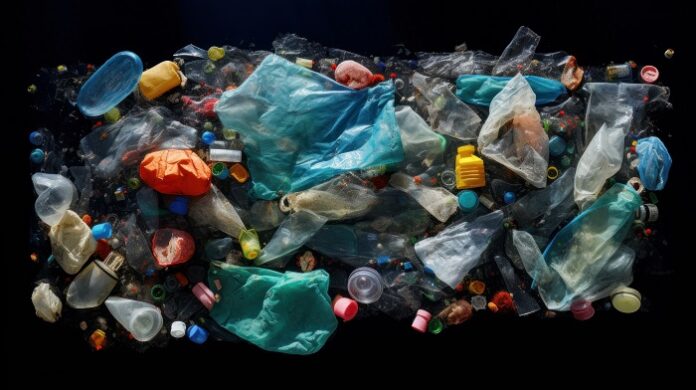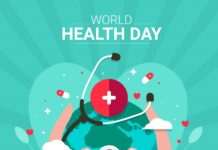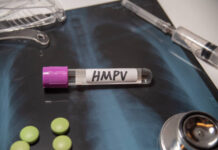Abstract
Microplastics (MPs) are small particles less than 5mm, resulting from the degradation of various big plastic items, manufacturing pellets, tyre wear and synthetic textiles. The annual human intake of microplastics from the environment through food, drinks, skin and inhalation is alarming and of a great concern. Microplastics can cause inflammation, cytotoxicity, oxidative stress, and DNA damage at the cellular level. This can further interfere with important biological processes in the human body affecting viability of the cells, mitotic activity, pro-inflammatory cytokines, and barrier integrity. These changes have shown to produce cancerous effects in pre-clinical studies. While various important remedial steps are being implemented like reducing, reusing and recycling wastes with their proper disposal are being implemented, but MPs are not responsive to, and escape from most of the waste management methods which are currently in use. This is mainly due to their size and origin. Novel concepts, and innovative methods need to be developed to plug all MP escape routes within waste management processes by carrying out further research on the escape pathways, MP flows, prevention planning, and enforcing quality control measures.
Keywords: Cancer, Microplastics (MPs), polyvinyl chloride (PVC), Macro-nano plastics (MNPs), Plastic Waste Management.
Introduction
Microplastics (MPs) are small particles less than 5mm, resulting from the degradation of various big plastic items, manufacturing pellets, tyre wear and synthetic textiles. Microbeads are tiny pieces of plastic added to some health and beauty products as exfoliants. In 2015, the U.S. banned the use of microbeads, but microplastics still remain a huge problem. Microplastics can be found in various places like air, water, soil, animals, food and beverages. Microplastics from tyres can end up on roads and in the purification systems, and synthetic fibres from clothing can find their way to water bodies and the ocean. Microplastics can be harmful to the environment threatening aquatic/marine life and other ecosystems and to human health as well. Microplastics can be ingested through food and drink, inhaled or through skin contact. They can further cause a range of health issues, including cancer, autoimmune diseases, endocrine disorders, reproductive problems, and metabolic disorders.1,2
MPs include different thermoplastic polymer plastic types, such as polyvinyl chloride (PVC), polyethylene terephthalate (PET), polyethylene (PE), polypropylene (PP), and polystyrene (PS). MP is an umbrella term for microplastic (MP=<5mm) and nanoplastic (NP= 1nm-1micron) particles, so sometimes the term macro-nano plastics (MNPs) is used. A study showed that people consume an average of 39,000–52,000 MP particles per year from different foods, and if inhaled microplastic particles are added to this, the number can rise to around 74,000 particles.3 For drinking tap water, another 4000 particles are added, while for drinking water bottled in plastic, the number increases by 9000 particles. This is likely to be an underestimation, and in reality, the values could be much higher. The pandemic caused by COVID-19 has affected not only human health, national economies but environment as well due to the large volume of waste in the form of discarded personal protective equipment.4 The remarkable increase in global use of face masks, which mainly contain polypropylene, and poor waste management have led to worsening of microplastic pollution.5
Pathophysiology in Cancer
As we observe the World Cancer Day on February 4, it is an apt time to review the role microplastics can play in the pathogenesis of cancer. Microplastics cause inflammation, oxidative stress, and DNA damage at the cellular level. They carry potential risk of cancer development based on the evidence from various in vitro and in vivo studies in rodents. Currently direct evidence in humans is not yet established but possibly cannot ever be due to limited possibility of any robust ethical randomised clinical trials in this setting especially with likely confounding factors like other environmental pollutants, lifestyle and smoking habits. 6
Data from animal studies have shown that once absorbed, plastic micro-nanoparticles from MPs can distribute to the liver, gut, heart, lungs, thymus, reproductive organs, kidneys and even the brain (crossing the blood–brain barrier). In addition, MPs are transport operators of persistent organic pollutants or heavy metals from invertebrate organisms to other higher trophic levels. After ingestion, the additives and monomers in their composition can interfere with important biological processes in the human body and can cause disruption of the endocrine and immune system, that can have a negative impact on mobility, reproduction and development, and thereby possible cause of cancer.2 In humans due to long-term microplastic exposure most common cancers which can develop are colorectal, lung, breast, ovary, and skin cancer.
From various in vitro tests, the scientists have found that MPs reduced cell viability in a dose-dependent manner and changed gene expression and the metabolic pathway. During in vitro tests, it was noticed that the MNPs (polystyrene nanoparticles – PS-NP) reduced the relative viability of epithelial ovarian cancer (EOC) cells in a dose-dependent manner, and increased mitotic counts, significantly affected gene expression and disturbed many metabolic pathways in both cultured EOC cells and EOC tumour tissue in mice exposed to PS-NPs.7 The summarized evidence supports the idea that oral macro-nano plastic exposure causes intestinal epithelial damage, chronic intestinal inflammation, and colonic mucus layer disruption that facilitate its passage into the bloodstream, thus contributing to the toxic effects on different organs, and platelet activation, which may, in turn, contribute to the chronic development of inflammation and colorectal cancer development.8 Study shows a significant accumulation of MPs in breast cancer patient samples. MPs bind to annexin A2 (ANXA2) and are endocytosed into cells, resulting in mitochondrial damage and subsequent induction of mitophagy, and inhibition of IL-17 exocytosis. These findings clarified the molecular mechanism of ANXA2-IL-17 signalling pathway causing mitochondrial damage by MPs and suggested the carcinogenic mechanisms of MPs.9
In human lung primary alveolar macrophages, 0.2–2 µm PVC particles consistently reduced the cell viability and were found to be cytotoxic and pro-inflammatory. They also increased IL6 and affected barrier integrity of the bronchial epithelial cell line. Altogether, MNPs affect cell viability, barrier function and oxidative stress responses in alveolar and airway epithelial cell lines as well as primary cell-based models. It is therefore likely that prolonged exposure of the epithelial barrier to MNPs can contribute to the development of lung disease and cancer.10 Experiments showed that MPs were internalized into the skin squamous cell carcinoma cell line in a time- and dose-dependent manner and promoted the proliferation of skin cancer cells. MPs could lead to increased mitochondrial reactive oxygen species (ROS) in skin cancer cells, which in turn causes a change in mitochondrial membrane potential, activating a cascading pathway ultimately causing skin cancer cell proliferation.11
Precautions and Protective Measures
MP pollution should be dealt with a combination of remediation and preventive measures.12 While remediation helps to clean up the environmental damage caused by the pollution; preventive measures attempt to curtail further pollution. Bioremediation, the use of microorganisms to break down MPs via hydrolysis, has been proposed to reduce microplastic-contaminated environments, particularly soil. Bioretention cells that are depressions in the ground where stormwater runoff is collected and treated, have been proposed as an effective method of removing MPs from urban stormwater and have been shown to achieve a median 84% decrease in MPs. Eliminating overuse of compost and fertilizer could help reduce soil contamination with MPs.
In order to achieve a reduction in plastic usage, countries are currently introducing regulations and bans on most commonly used single-use plastic items and replacing with alternatives like ceramic, glass wherever possible. There is also possibility of cancer risk in using tea/coffee paper cups as they have coating of thin film made of PFA which again is a carcinogen. Such regulations are also needed for use of plastics in packaging materials. A few countries have banned microbeads (United States Congress introduced the Microbead-Free Waters Act in 2015 to prohibit manufacturing, packaging, and distribution of rinse-off cosmetics that contain plastic microbeads, while Australia phased out microbeads in 2020). In its fifth assembly, convened in 2022, the United Nations Environment Assembly (UNEA) unanimously agreed on developing a legally binding treaty to combat plastic pollution, undoubtedly the most important development related to MP pollution in its entire history.
The 3R slogan (reduce, reuse, recycle) with proper disposal of the rest of the waste, is an excellent effort. Daily vacuuming, recycling clothes and choosing sustainably sourced natural materials while buying new clothes, switching to glass/ceramics, etc. are some useful individual measures. However, the challenge is that MPs are not responsive to, and escape from most of the waste management methods currently in use, mainly due to their size and origin.
Although enhanced recycling can help to address the larger issue of plastic pollution, it is of limited value to stop MP pollution. Therefore, novel concepts, and innovative methods need to be developed and added to policies. Enhancement of plastic waste management activities cannot guarantee results until all MP escapes routes within waste management processes are shut. For this, the escape pathways and relative proportions of MP flows through these routes need to be researched and evaluated. Other important measures include obtaining additional data needed for prevention planning, closing the MP loop between landfills and wastewater treatment plants, enforcing quality control measures on recovery and cycling associated with plastics, and proper disposal of unattended plastics items.
Conclusion
Microplastics (MPs) and Micro-nanoplastics (MNPs) exposure and intake in humans is very alarming and concerning. Microplastics cause inflammation, cytotoxicity, oxidative stress, and DNA damage at the cellular level, affecting cell viability, mitotic activity, pro-inflammatory cytokines, and barrier integrity, that have shown to produce cancerous effects in pre-clinical studies. Remediation and preventive efforts along with regulations are being explored by various countries for the correct use and disposal of MPs. However, the challenge that MPs often escape from most of the waste management methods currently in use must be addressed. Efforts are needed to develop various innovative methods to stop MP escape routes within the waste management processes through investment in research on the escape pathways, MP flows, prevention planning, and implementing an effective quality control.
References
1. National Ocean and Atmosphere Administration NOAA [Internet]. Accessed Jan 16, 2025. Available from https://oceanservice.noaa.gov/facts/microplastics.html#:~:text=Microplastics%20come%20from%20a%20variety,cosmetics%20and%20personal%20care%20products.
2. Ziani K, Ioniță-Mîndrican CB, Mititelu M, Neacșu SM, Negrei C, Moroșan E, et al Microplastics: A Real Global Threat for Environment and Food Safety: A State of the Art Review. Nutrients. 2023 Jan 25;15(3):617.
3. Cox KD, Covernton GA, Davies HL, Dower JF, Juanes F, Dudas SE. Human Consumption of Microplastics. Environ. Sci. Technol. 2019;53:7068–7074.
4. Lee M, Kim H. COVID-19 Pandemic and Microplastic Pollution. Nanomaterials (Basel). 2022 Mar 3;12(5):851.
5. Tiwari BR, Lecka J, Pulicharla R, Brar SK. Microplastic pollution and associated health hazards: Impact of COVID-19 pandemic. Curr Opin Environ Sci Health. 2023 Aug;34:100480.
6. Goswami S, Adhikary S, Bhattacharya S, Agarwal R, Ganguly A, Nanda S, Rajak P. The alarming link between environmental microplastics and health hazards with special emphasis on cancer. Life Sciences,2024; 355:122937.
7. Chen G, Shan H, Xiong S, Zhao Y, van Gestel CAM, Hao Qiu H, Yu Wang Y. Polystyrene nanoparticle exposure accelerates ovarian cancer development in mice by altering the tumor microenvironment. Science of The Total Environment, 2024; 906: 167592.
8. Bruno A, Dovizio M, Milillo C, Aruffo E, Pesce M, Gatta M, et al. Orally Ingested Micro- and Nano-Plastics: A Hidden Driver of Inflammatory Bowel Disease and Colorectal Cancer. Cancers 2024, 16, 3079.
9. Tian Z, Ding B, Guo Y, Zhou J, Jiang S, Lu J, et al. Microplastics accumulated in breast cancer patients lead to mitophagy via ANXA2-mediated endocytosis and IL-17 signalling pathway. Environmental Pollution. 2025; 364(2): 125321.
10. Vasse GF, Melgert BN. Microplastic and plastic pollution: impact on respiratory disease and health. European Respiratory Review 2024 33(172): 230226.
11. Wang Y, Xu X, Jiang G. Microplastics exposure promotes the proliferation of skin cancer cells but inhibits the growth of normal skin cells by regulating the inflammatory process. Ecotoxicology and Environmental Safety. 2023; 267:115636.
12. Hettiarachchi H, Meegoda JN. Microplastic Pollution Prevention: The Need for Robust Policy Interventions to Close the Loopholes in Current Waste Management Practices. Int J Environ Res Public Health. 2023 Jul 23;20(14):6434.
1Senior Consultant Medical Oncologist, Indraprastha Apollo Hospital, Delhi and Ex-Senior Consultant Medical Oncologist, NHS UK.
2Chief Editor, The Indian Practitioner, and Medial Director, Dr Varsha’s Health Solutions, Mumbai. (Corresponding Author– info@drvarsha.com)





